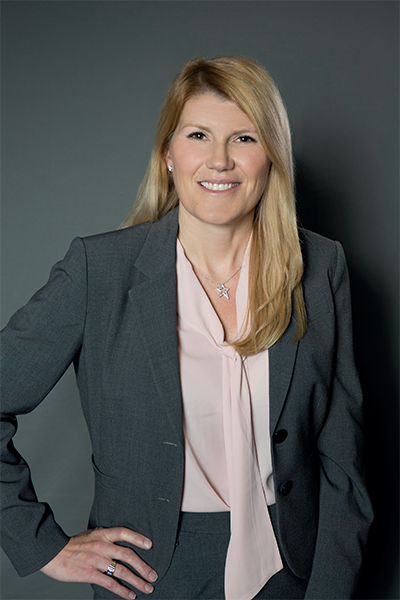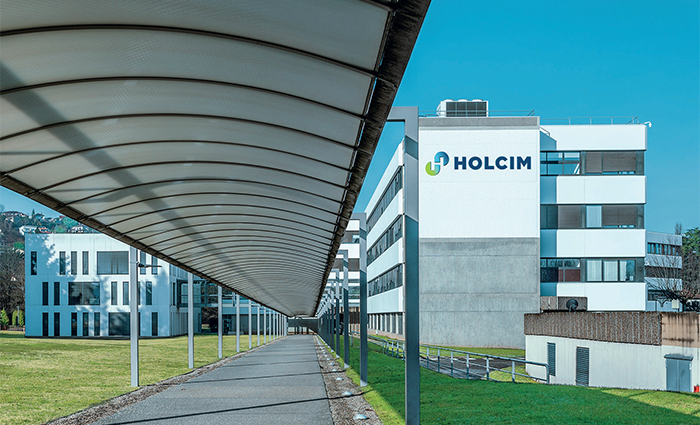Building the future
It’s Q&A time for Jamie Gentoso, President, Holcim Building Envelope and Global Head, Holcim Solutions & Products
Let’s start with some more information about you:
First off, I’m a wife and a mother with kids aged 13, 11 and 10, and I know we have an opportunity to leave them with a better world. By training, I’m a civil engineer and have worked in construction materials my entire career. I love the industry and see that it has so many opportunities for those who are ambitious, hardworking and who want to make change. Early on in my career, I learned about the tremendous impact the built environment has on the earth, both in the manufacturing of the building materials but also throughout the use of the building’s life.
I’m passionate about working to build better with less, and to reduce the overall impact of the built environment. Two of my strongest traits are my ambition and competitive spirit. They both drive me because I love a challenge, and I love to conquer it even more!
Do you have any experiences as a woman working in construction that you could share?
Initially, I tried hard to fit in and be ‘one of the boys.’ I was often the ‘only’ in the room, and it took me some time to find my voice. Finding the courage to stand out can be difficult for anyone, but I found I had to push myself to speak up or take my own seat at the table. It paid off because I was able to voice a different opinion while also adding value. Now, I want to inspire young women to understand their potential in this industry. This industry is open to everyone, regardless of sex, ethnicity, background, etc. I believe our differences can make us stronger, and the sooner our industry is more representative, I’m convinced we will be more powerful and build even better!
The industry needs to find ways to attract workers in general – we face real issues in attracting talent in all areas of the business, from skilled trades to the back office. I take any opportunity possible to get in front of young people and sing the praises of the construction industry and its opportunities.
Appreciating staff and acknowledging the efforts of your team is important to you – how does that translate into your day to day work at Holcim?
Like any business, our people are our most fundamental and important asset. Our success is dependent on having the right people in the right places. Our teammates should feel motivated and excited by the work we’re doing, and feel like they are part of building a positive culture. As a leader, my role is to share our vision, align on our shared purpose and make sure everyone is working toward the same short- and long-term targets.
 What are you working on at the moment?
What are you working on at the moment?
We underwent a rebrand this year – transitioning Firestone Building Products to Holcim’s Building Envelope Division and transitioning the Firestone roofing, wall and lining systems brand to a new brand name, Elevate.
Holcim Building Envelope is our new center of excellence for roofing, wall, lining and waterproofing solutions for commercial and residential customers around the world. And Elevate symbolizes Holcim’s continued commitment to deliver superior quality and innovation with advanced building solutions. I am laser focused on bringing more solutions into our portfolio through both organic innovation and through mergers and acquisitions. The goal is for the Holcim Solutions & Products business unit is to generate more than 30 percent of Holcim’s revenue by 2025, and we are well on our way.
Holcim is supporting The White House’s Buy Clean efforts – can you tell me more about that strategy?
We are working hard to make our products eco-friendlier, but we need help from our policymakers. The U.S. federal government is a huge procurer of goods and has the power to change markets. The Buy Clean commitment to sourcing low-carbon products will enable Holcim to invest in American manufacturing, help launch new low-carbon products and help us build the future for people and the planet. We also work closely with our local governments to try to help them understand that ‘buy clean’ is completely necessary. While government buy-in is one of the pieces, manufacturers must also make upfront changes to their businesses.
One of the main complaints about ‘green’ products is that they cost more. Part of this issue is that they are currently only niche products and until they are in higher demand and utilized en masse or in the mainstream, it will be difficult to lower their costs. It will take manufacturers making bold moves, having the courage to defy demand and only producing low(er) impact, green products. I mention this because Holcim did just this in the cement market, moving production over the last year over to lower impact Type IL cement despite a lack of demand. We need to be leaders and do our work to move markets at the same time we work with our policymakers.
In terms of investments, they are completely in line with our purpose to build progress for people and planet.
How can the industry encourage more construction companies to look for greener concrete alternatives? What is holding them back (if anything)?
To be most efficient, cement plants run 24 hours a day, seven days a week, and typically have only one or two shutdowns per year. Buildings are responsible for 38 percent of the world’s CO2 emissions – it’s clear we need to build better. Concrete has to hold up to an 80-story building, span miles over canyons or hold back millions of gallons of water, and specifiers have a hard time changing a product that has been standing the test of time for hundreds of years so efficiently – but it can be done. People fear change, but the outcome of not changing is worse. If we start using lower-impact cement, the environmental footprint of the whole concrete (and construction) industry changes dramatically. We need to accept that the concrete of yesterday will not, and cannot, be the concrete tomorrow.
What do you envision we will see from Holcim in the coming 12 months?
It’s an exciting time as we’re finally starting to see changes in how the construction industry prioritizes our sustainable future. We’re growing quickly, but we only invest in businesses that are committed to this cause – like those businesses we acquired this year.
We’re amidst innovative R&D projects to replace materials that can be scarce and/or have high environmental impact.
At the end of the day, we’re focused on our customers. So we have many projects in progress that make our customers’ jobs easier, faster, and ultimately, reduce labor. This will include unique advancements in insulation and even transportation, focused on lower costs and higher efficiency.
Finally, we’re heading to net zero! While 38 percent of global CO2 emissions come from buildings, 70 percent of that is from the life of the building and 30 percent comes from the building material. Urbanization and population growth will continue driving these numbers if we don’t make changes. We have the possibility to improve that 30 percent with low-impact products, and we can also affect the other 70 percent by considering the full building envelope and using more efficient materials. My division is precisely focused on bringing these types of solutions into Holcim’s portfolio, while continuing inorganic growth through mergers and acquisitions.
It’s worth noting we were one of seven companies globally that had our 2050 roadmap verified by SBTi (Science Based Target Initiative). As the name implies, our sustainability goals are based on science – it’s not just advertising. We have also put our money where our mouth is and have sustainability-linked financing – targeted at 40 percent by 2024 – and have also linked senior leadership incentives to our sustainability targets. From the products we procure to the way we run our factories, to the products we produce, we have put sustainability at our core.
Returning to your own career again finally, what is the most important lesson you have learned in business, and also the best bit of advice you have had from someone else?
Throughout my career there have been many lessons and many times I had to remind myself that if it were easy, they wouldn’t need me. In the end, it really does come down to people and working as a unified team with a shared purpose. This is the absolute most important part of my job as a leader. You can have the newest factory with the best equipment that money can buy, but if you don’t have a great leader with a motivated, united team, that factory will never perform as it could and will be run down before its time. Best advice – get the people right!
Any closing words?
This industry is being hit by a tsunami of change. Twenty years ago, I was speaking to specifiers about using lower impact products and LEED was the buzz. These were just tiny waves, no surfing. Now the wall of water is upon us, and there is a huge opportunity to (surf and) join an industry that will define our future as a society and the way we live. If we can’t get the younger generations and a more diverse population excited about being part of this, I don’t know what will. I believe the next ten years will be the most dynamic this industry has ever seen. It’s an exciting time, and I am proud to be a part of a company that wants to lead.
For more details on Holcim’s range of building envelope solutions visit: www.holcimbe.com/content/holcim-envelope/en.html
